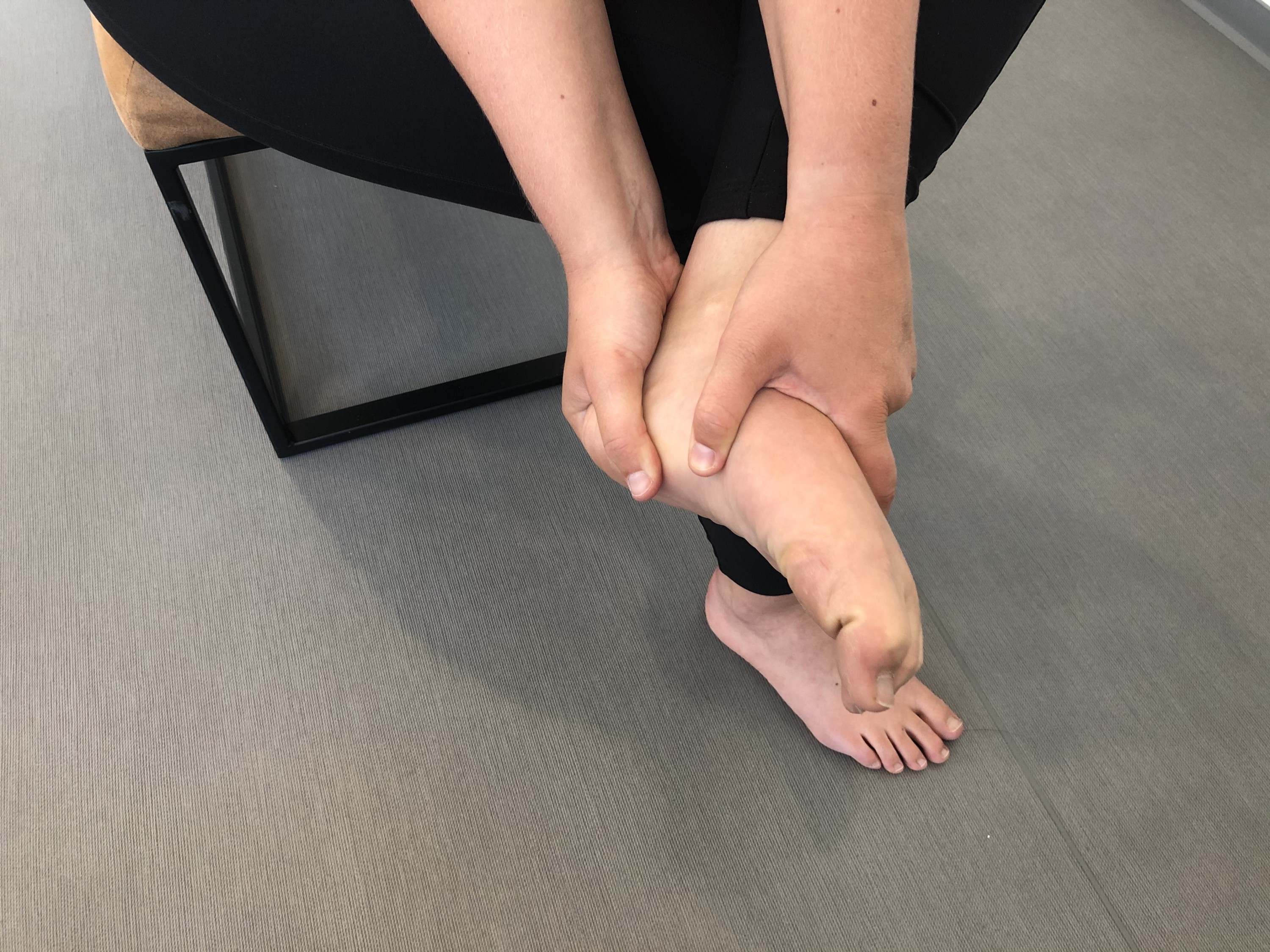
Tibialis posterior injury
Complaints on the inside of the ankle can be caused by problems with the tendon that runs along the inside of the nodule (malleolus) of the ankle. Specific exercises, which are described below, are essential to perform.
1. Actief tibialis posterior
Ga op een stoel zitten, leg één voet op je been, pak met één hand de hak aan de achterkant vast, met de andere hand pak je de voorvoet bovenop vast, vervolgens beweeg je langzaam de grote teen omlaag en weer terug omhoog.
2. Inversie weerstand (enkel)
Neem plaats op een stoel en plaats het stiek om uw voet. Draai vervolgens de voetzool naar binnen.
3. Axiale druk plantair- en dorsaalflexie (enkel)
Plaats de voeten in schrede stand. Buig de achterste knie naar voren en strek de voorste knie. Je kunt eventueel steun nemen tegen de muur.
4. Calf raise actief met stoel
Ga achter een stoel staan. Pak deze met beide handen vast en zorg dat u rechtop staat. Plaats uw voeten op schouderbreedte uit elkaar. Ga op uw tenen staan, laat de hielen langzaam naar de grond zakken. Herhaal deze oefening 20 keer.
Resistance band
Hard. Compact. Qualitatively.

The meaning of a tibialis posterior muscle injury
Medial ankle pain can occur due to an injury of the tibialis posterior muscle or tendon. The tendon runs behind the ankle fork (medial malleolus) on the inner side of the ankle and attaches to the navicular and cuneiform bones under the arch of the foot. Its function is to pull the foot down and inward.
The causes of a tibialis posterior muscle injury
Injury of the tibialis posterior can be caused by an acute injury (too much impact on the tendon), overuse (after running for instance), a collapsed arch or flat feet (pes planus). The increased load irritates the tendon (tendinitis) resulting in a deterioration in tendon quality (tendinopathy). This can alter foot posture, eventually leading to progressive arch collapse.
Tibialis posterior injuries are often overlooked as there is not much information available on this type of injury. It is often only looked at when all possible other ankle injuries are excluded.
The symptoms of a tibialis posterior muscle injury
Pain on the inner side of the ankle radiating to the heel is most common. Prolonged walking, running, climbing stairs or pressure from a shoe can aggravate the symptoms. This injury mostly affects hikers or athletes.
The treatment of a tibialis posterior muscle injury
After the diagnosis has been confirmed with ultrasound imaging, you will start your physiotherapy treatment. An exercise program aims to strengthen the tibialis posterior muscle and improve ankle stability.
Full recovery from a tibialis posterior injury generally takes between 6 weeks and 3 months.
Synonyms
Ankle flexor, foot flexor, medial ankle pain, tibialis posterior pain, tib post
Advice
If you have any questions regarding the exercises, doubt if you are doing them correctly or aren’t sure they are suited for your condition, please contact your physiotherapist for support.
Attention:
Yourbody.coach offers a range of exercises. Yourbody.coach can not be held responsible if you develop injuries. Always consult your physiotherapist or specialist.